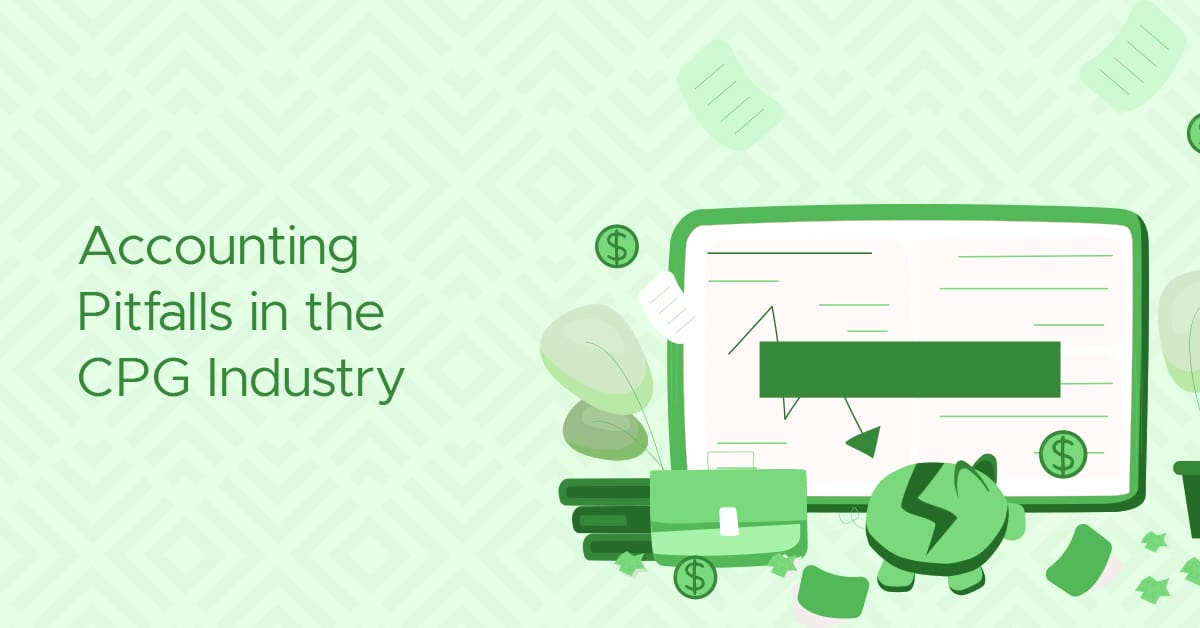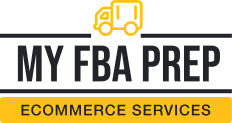
Issue 114: CPG Accounting Pitfalls and Mastering Cash Conversion Cycles

Hello, MyFBAPrep Sellers!
In this newsletter you’ll learn about the common mistakes in CPG accounting, how to optimize cash conversion cycles, and the eCommerce triple threat of marketing, inventory, and finance.
CPG Accounting Industry Pitfalls
Inventory is constantly moving in the CPG sector, so any error in stock count can lead to incorrect financial statements that skew your understanding of product performance. Inaccurate tracking often stems from manual processes that are prone to human error.
Misunderstanding FBA fees and revenue recognition
Many new Amazon marketplace sellers underestimate the complexity of FBA fees. They encompass a range of costs, including handling, storage, long-term warehousing, and even fees related to inventory disposal or returns.
Each FBA fee has specific conditions and triggers depending on factors like your product size, weight, and how long it’s been in storage. That complexity makes it easy to misunderstand these expenses and their impact on your profits.
Poor cash flow management
The CPG industry experiences rapid turnover. Unlike sectors with slower inventory movement, CPG businesses constantly see cash flowing out for new materials and production while waiting for finished goods to be sold and generate income. This creates a cash flow gap that needs careful management.
Without clear insight into incoming and outgoing cash flow, it’s easy to lose track of your finances. That can lead to bills and overhead piling up before you realize there isn’t enough cash readily available to pay them (known as a liquidity squeeze).
Neglecting tax obligations
Sales tax can be a complex beast in traditional retail, but it becomes a hair-pulling enigma in eCommerce. CPG businesses that sell across state lines on platforms like Amazon especially feel that pain.
Unlike brick-and-mortar stores with a single physical location, eCommerce brands can have a virtual presence in multiple states, each with its own sales tax laws, rates, and exemptions. It’s even worse on marketplaces, where many states have enacted marketplace facilitator laws.
These shift the responsibility of collecting and remitting sales tax from the seller to the marketplace platform (e.g., Amazon). However, the laws vary by state and can be subject to change. To avoid potential liability, sellers must know their obligations and ensure their Amazon settings are accurate.
Another consideration is your “nexus” — that is, a seller’s connection to a state. If your business has a nexus in a state (which can be established through factors like storing inventory there or exceeding a certain sales threshold), you become responsible for collecting and remitting sales tax, even if you don’t have a physical presence.
Learn all the CPG accounting pitfalls and how to navigate them.
Mastering Your Cash Conversion Cycle to Thrive
One of the most impactful ways to improve your cash conversion cycle is to cut inventory costs without compromising the ability to meet consumer demand.
- Implement just-in-time (JIT) inventory systems
- Improve supplier negotiations
- Leverage technology for inventory forecasting
- Perform regular inventory audits
- Optimize inventory layout
Here’s more ways to get those cash conversion cycles rolling.
Get a clear picture of your logistics costs with one contract, one contact, and easy-to-understand custom pricing
Work with MyFBAPrep to consolidate your ops and logistics under one seamless point of contact.
The eCommerce Triple Threat: Inventory, Marketing, and Finance
In eCommerce, success often hinges on effectively managing three crucial elements: inventory, marketing, and finance. When well honed, they can propel a business to new heights, while weakness in any one of them can quickly drag it down.
A siloed approach, where departments function independently, creates blind spots and missed opportunities; imagine your marketing team launching a massive campaign for a product with limited inventory. Conversely, your inventory team might overstock slow-moving items, tying up valuable cash flow and storage space. That lack of communication disrupts the harmony of the triple threat and inhibits its effectiveness.
We recently interviewed Chelsea Cohen, co-founder and CEO of SoStocked, who’s mastered this delicate balance. Her leadership led SoStocked to significant growth, culminating in its acquisition by Carbon6. Cohen’s insights craft a roadmap for optimizing eCommerce operations, unlocking higher margins, and driving strategic, sustainable growth.
Learn how to leverage the triple threat to become a top seller.
Top Industry News
Inc 5000 2024: Meet the Companies Building the Future (Inc. Magazine)
MyFBAPrep, a leading eCommerce warehouse and fulfillment network, today announced it was named to Inc. magazine’s annual Inc. 5000 list. This is the second-consecutive year the South Florida-based company has made the most prestigious ranking of the fastest-growing private companies in America.
New Amazon FBA Refund Policies Could Cost You Thousands (GETIDA)
Amazon’s recent updates to its Fulfillment by Amazon (FBA) refund and reimbursement policies are crucial for sellers. Announced on July 24th, these changes significantly shorten the timeframes for filing some claims. If sellers adapt quickly, they can avoid losing substantial amounts of money. This article discusses the changes, their implications, and how sellers can best prepare.
Pitney Bowes’ eCommerce Logistics Unit Shutting Down (Supply Chain Dive)
Pitney Bowes’ e-commerce logistics unit is shutting down, with many of its parcel delivery and returns services ceasing operations in the coming weeks. Pitney Bowes said the move was in the best interest of the company and will help drive improved results in 2025.
U.S. Lawmakers Move to Restrict Trade Provision Favored by China’s E-Commerce Giants (Wall Street Journal)
A bipartisan group of U.S. lawmakers have proposed a new law to restrict a trade provision, favored by retailers such as Temu and Shein, that lets goods flow in from China with little scrutiny and no duties. The bill, released Thursday, would block textiles and apparel from being imported through what is known as the de minimis provision. It also would establish a fee of $2 per shipment for goods that aren’t banned from entering via this route.
Amazon Cozies Up to TikTok. What’s Bringing the E-Commerce Rivals Together (Barrons)
TikTok just took a big step toward becoming a major e-commerce player in the U.S. Shoppers on the video-sharing platform will now be able to buy items on Amazon.com without leaving the TikTok app. It’s another sign of TikTok and its owner ByteDance’s ambitions to make the app more of a consumer destination in the U.S., even as it labors under the threat of being banned.
The Race to Displace: How Temu and Shein are Redefining Ecommerce (Retail Touchpoints)
Amazon has dominated the ecommerce landscape for over a decade and is on track to overtake Walmart as the largest retailer in the U.S. Amazon’s vast marketplace, combined with its rapid fulfillment and Prime business, effectively calcified its position. Now, we’re witnessing a new wave of ecommerce in the U.S. driven by Chinese competitors. Shein and Temu have launched massive advertising campaigns paired with optimized sales tactics to carve out a new niche and redefine the standards of ecommerce success. Finally, TikTok has rapidly entered the U.S. ecommerce market with TikTok Shops, delivering the most complete social commerce experience to date.
Amazon Deals Expands to TikTok, Pinterest (PYMNTS)
Amazon has partnered with TikTok and Pinterest to let the users of those social media apps buy products from Amazon without leaving those apps. This offering is designed to make it more convenient for Amazon customers to shop on those social media platforms. To use this social commerce offering, TikTok and Pinterest users will link their profiles from those platforms to their Amazon accounts, enabling them to buy products directly from the ads.
Amazon Axes a Major Fee for Sellers Ahead of the Crucial Holiday Shopping Rush (Fortune)
Amazon announced the elimination of another fee ahead of the holiday shopping season that impacted hundreds of thousands of U.S. sellers. The so-called “overage” fee penalized sellers whose inventory in Amazon warehouses exceeded the limit set by the company, either because customer demand had slowed or for other reasons.
Until next time,
Rachel Andrea Go
Marketing Director, MyFBAPrep
